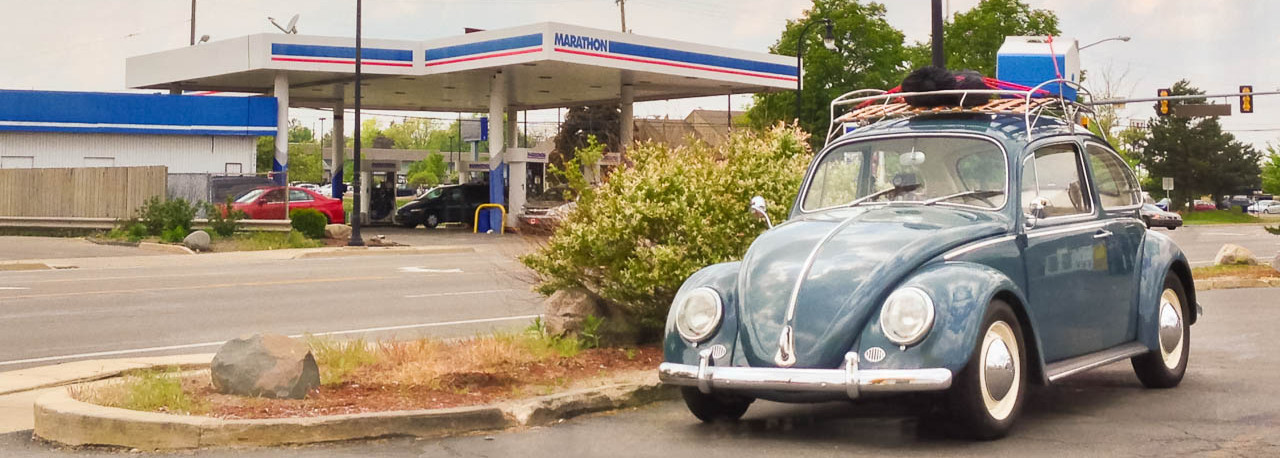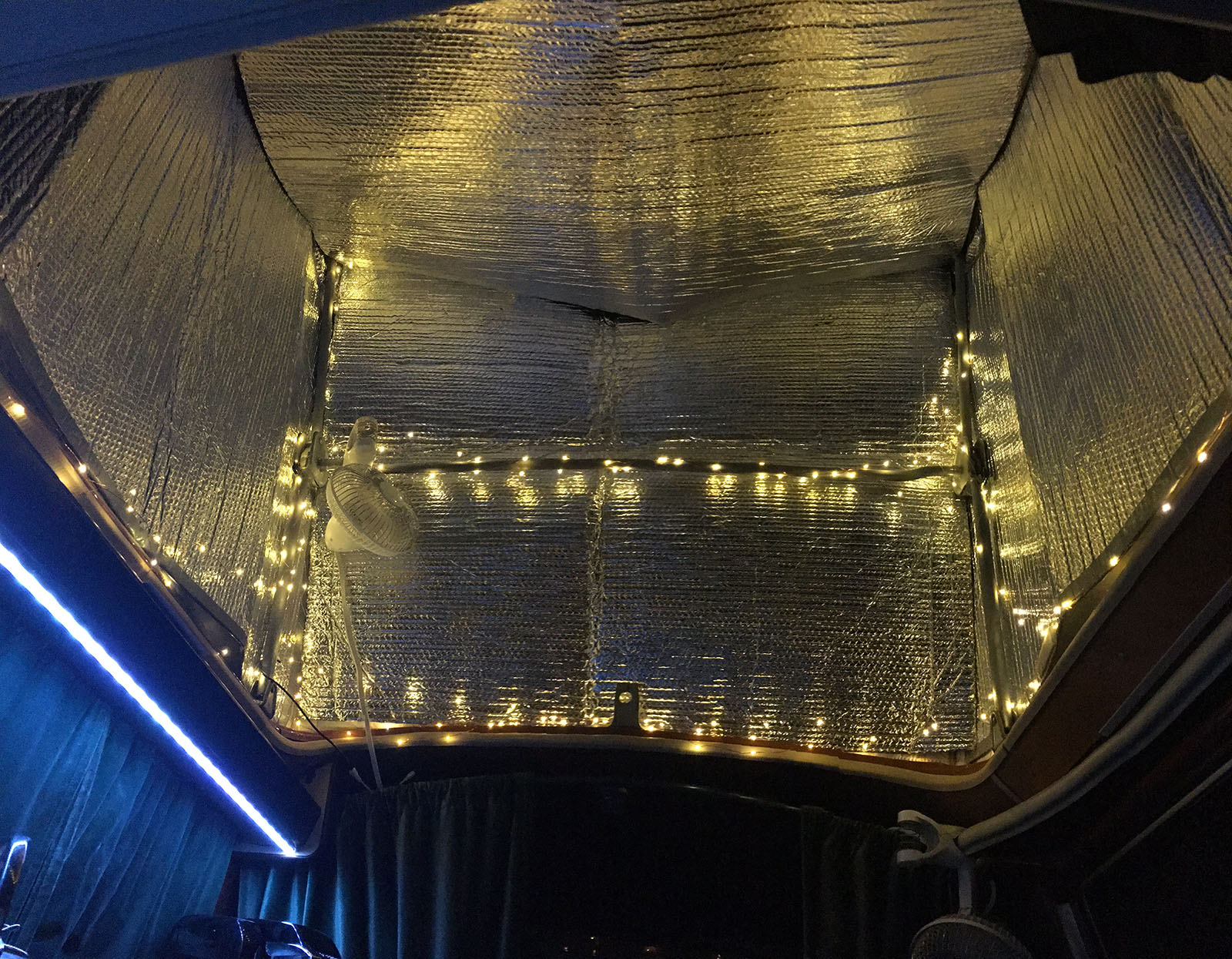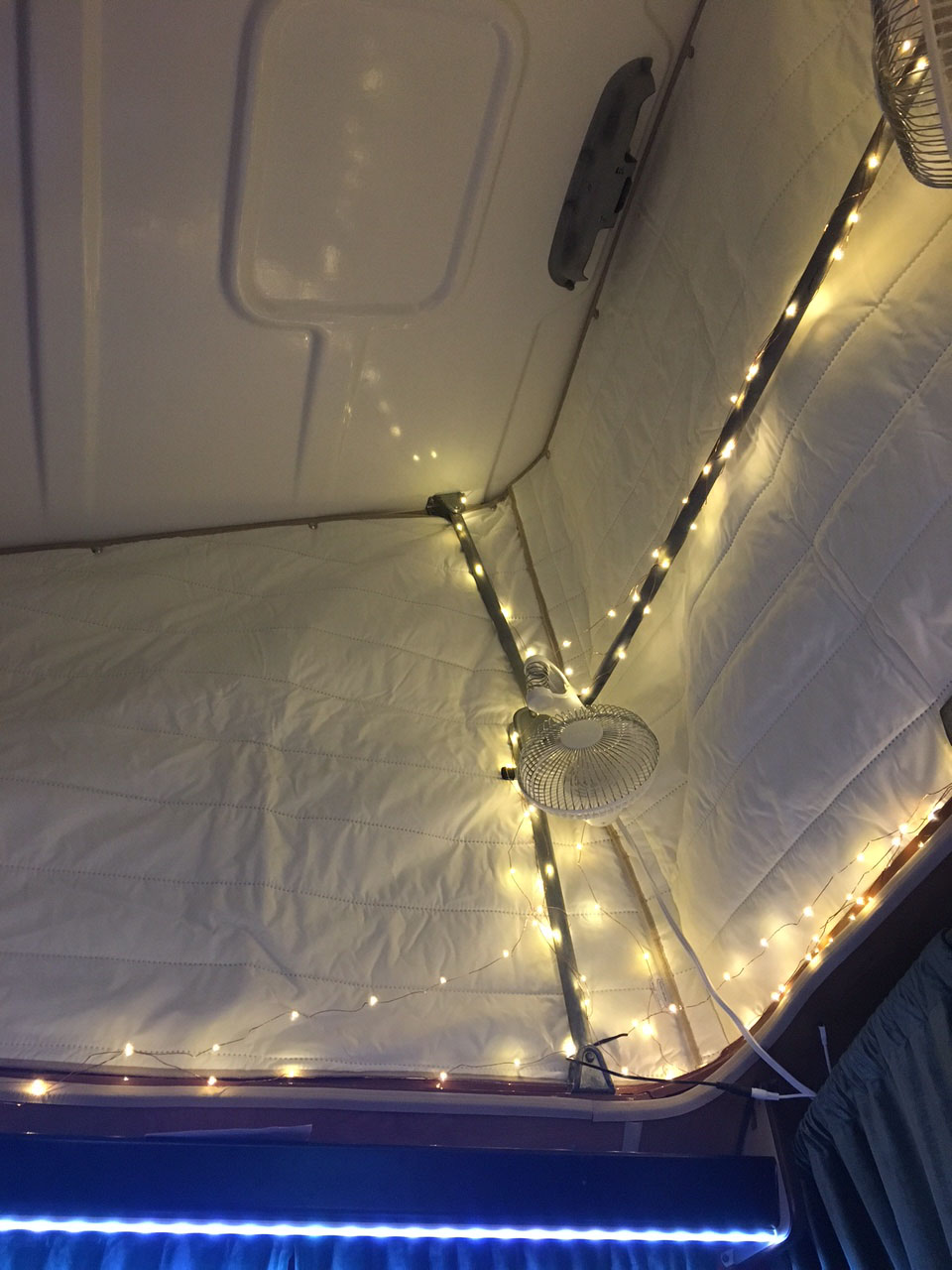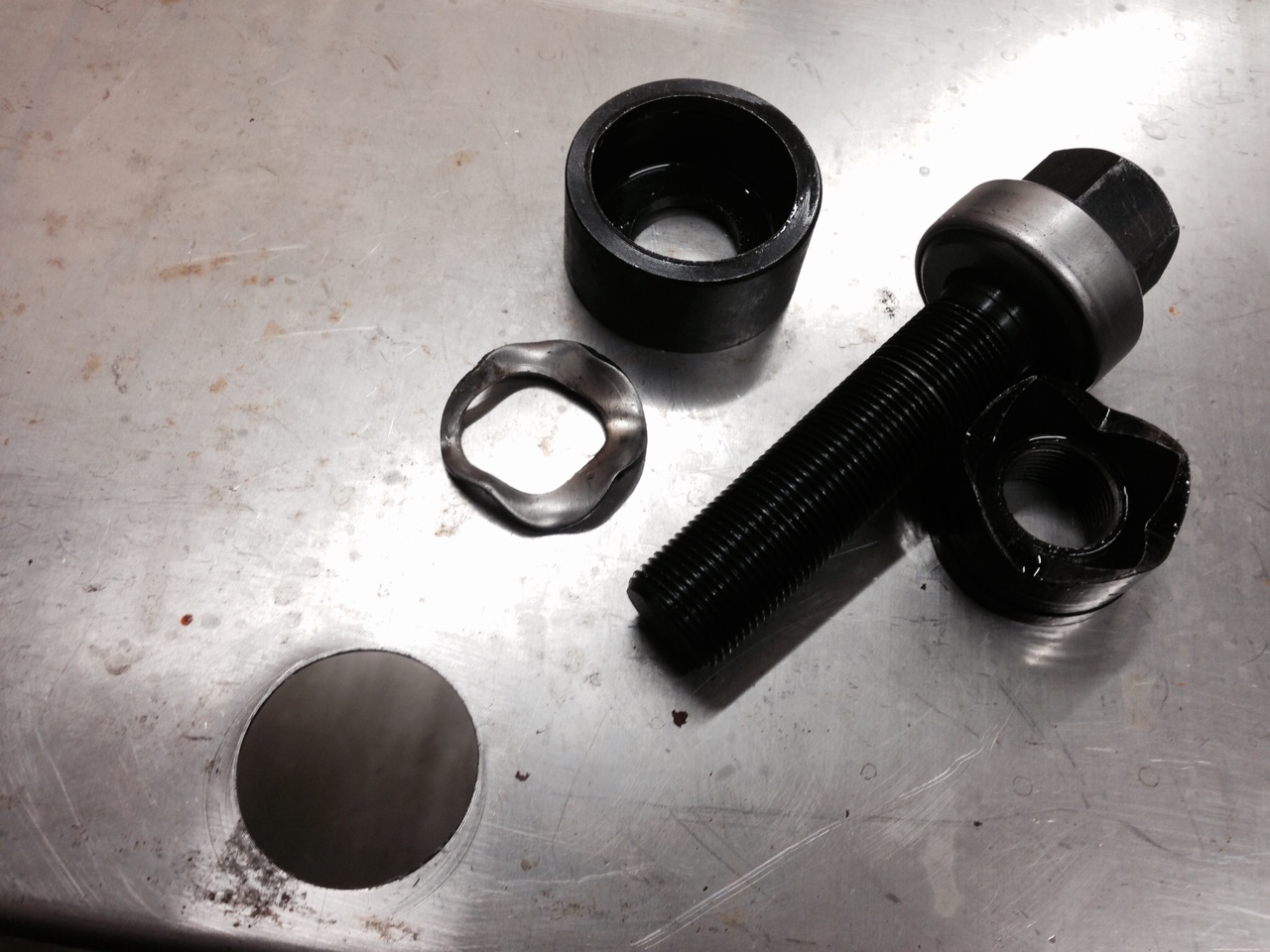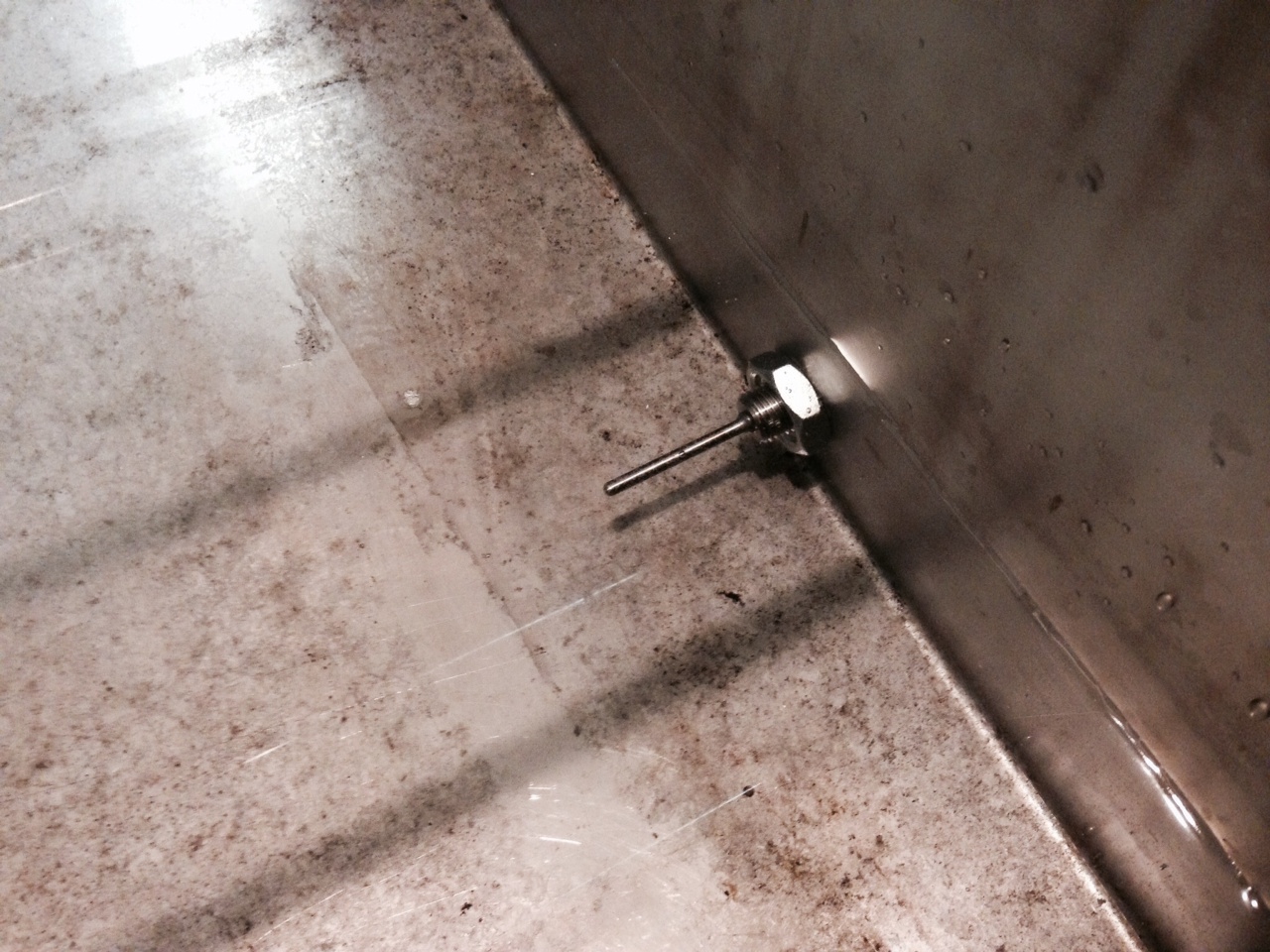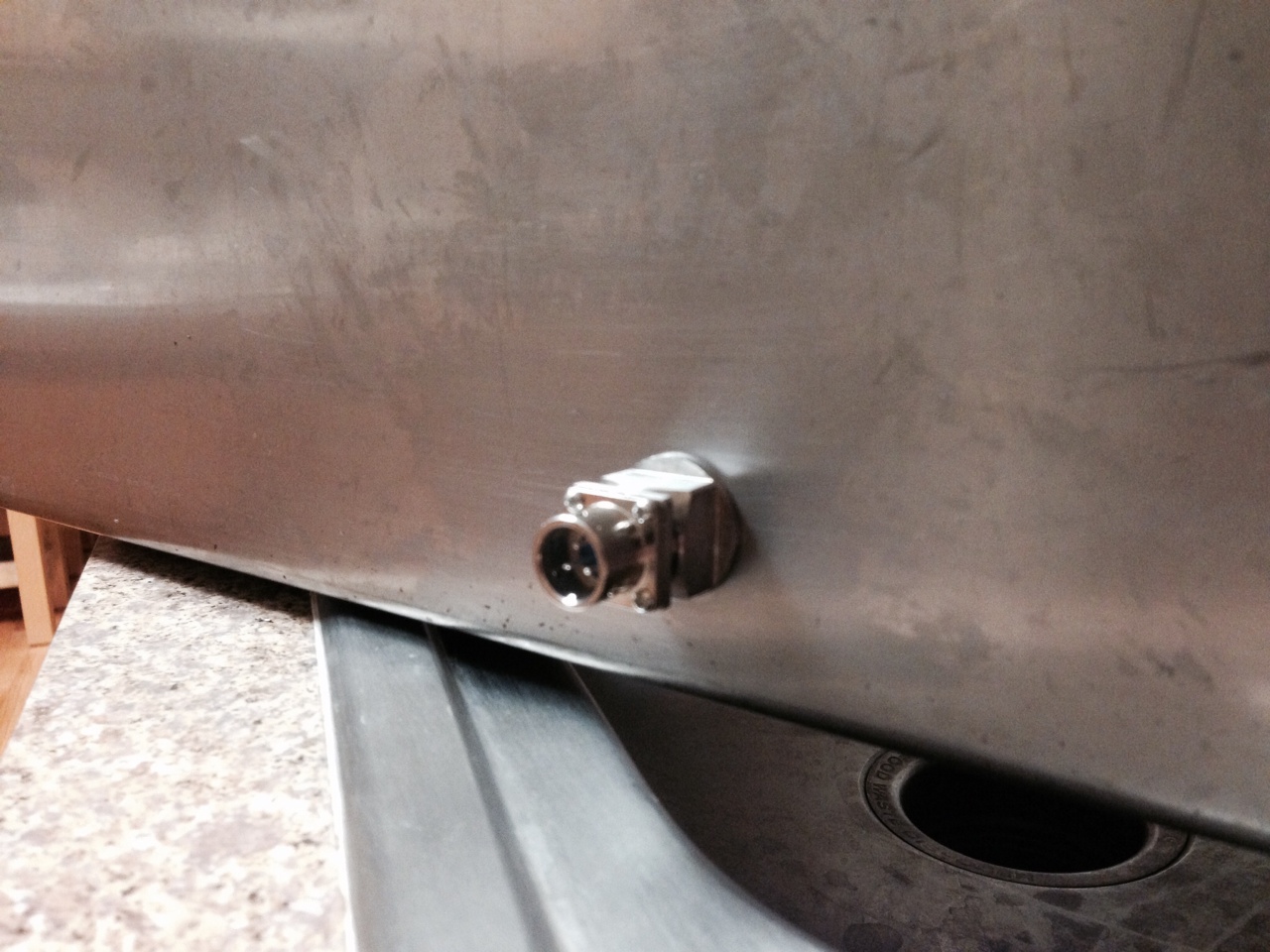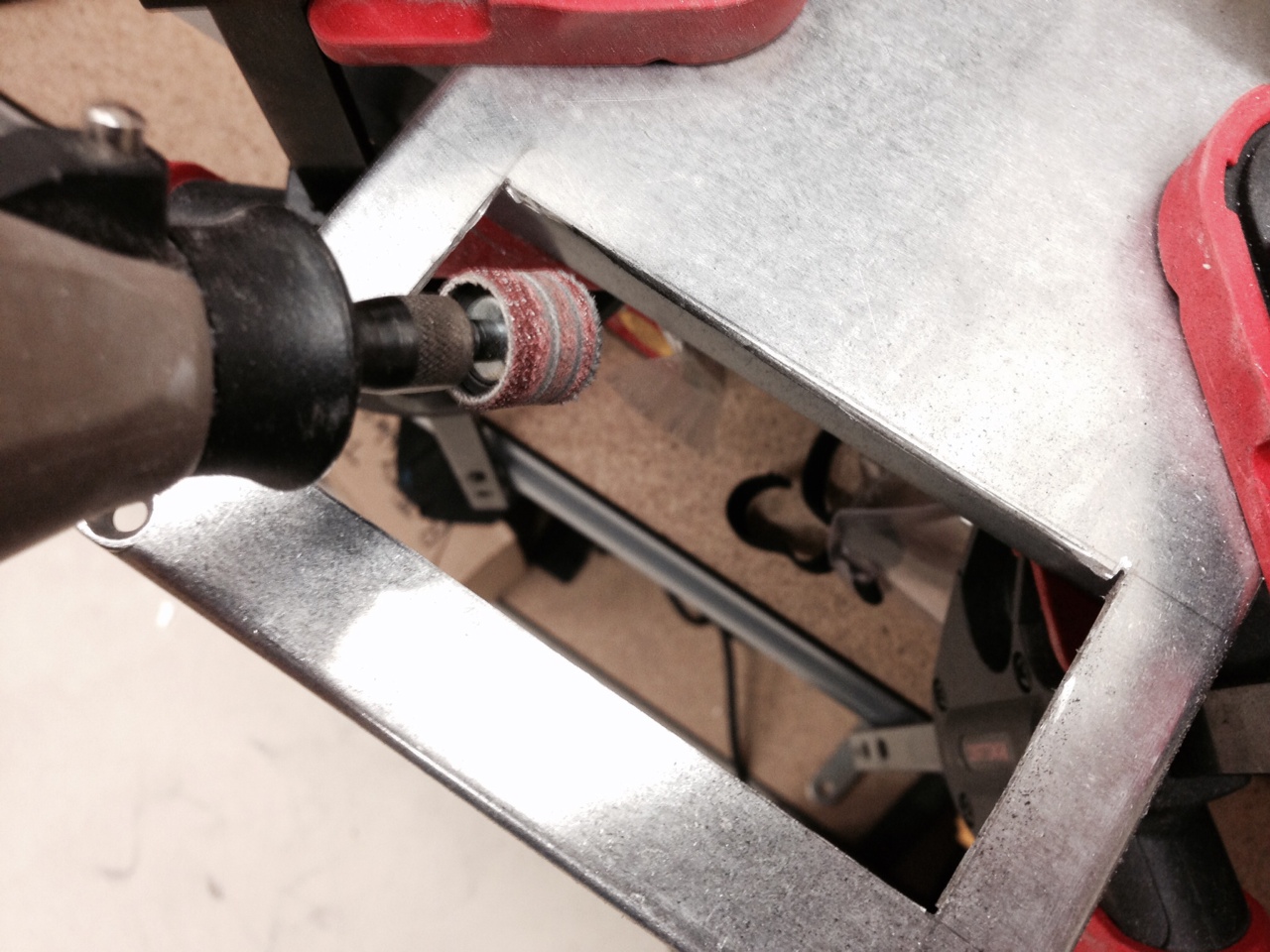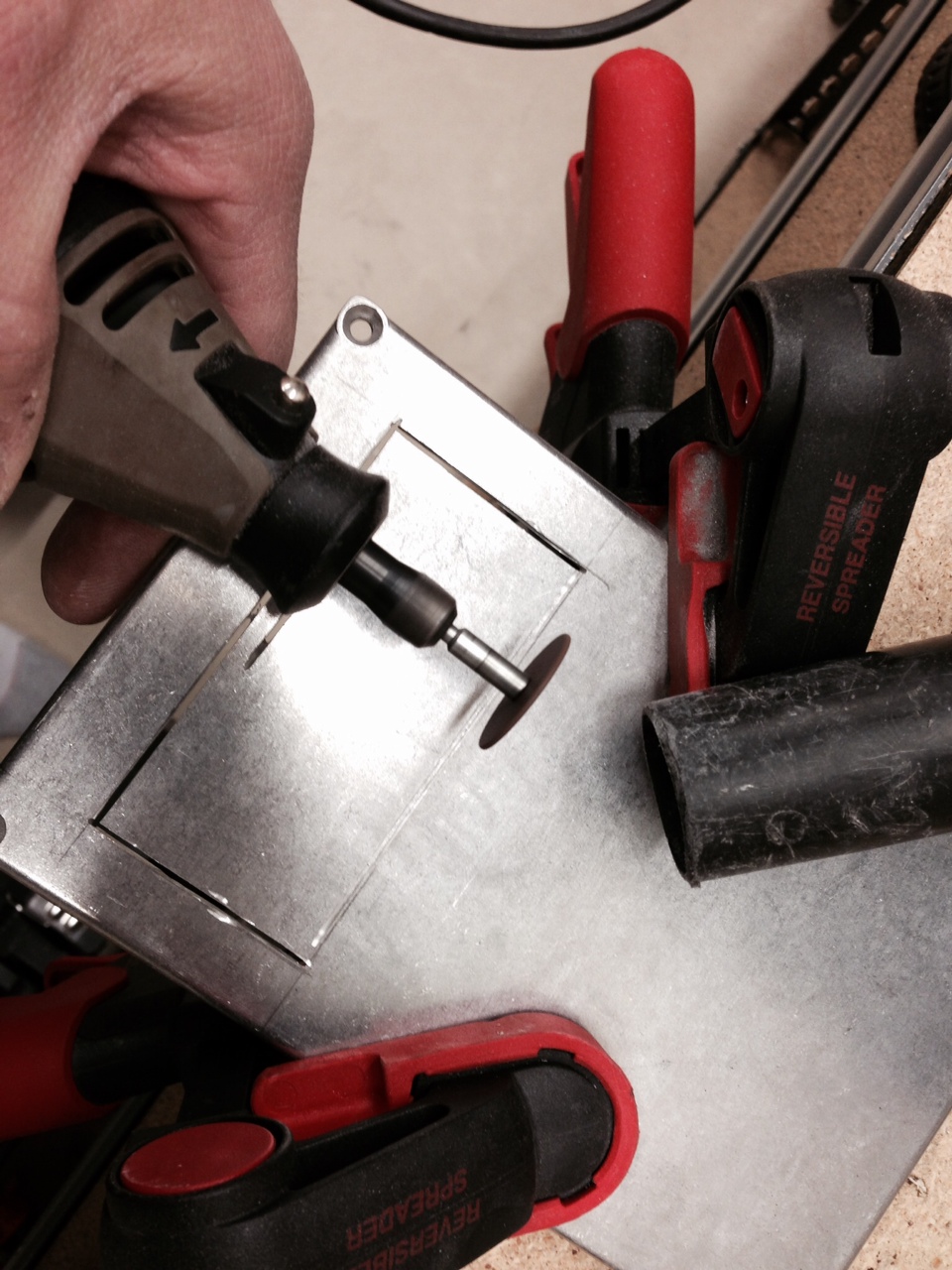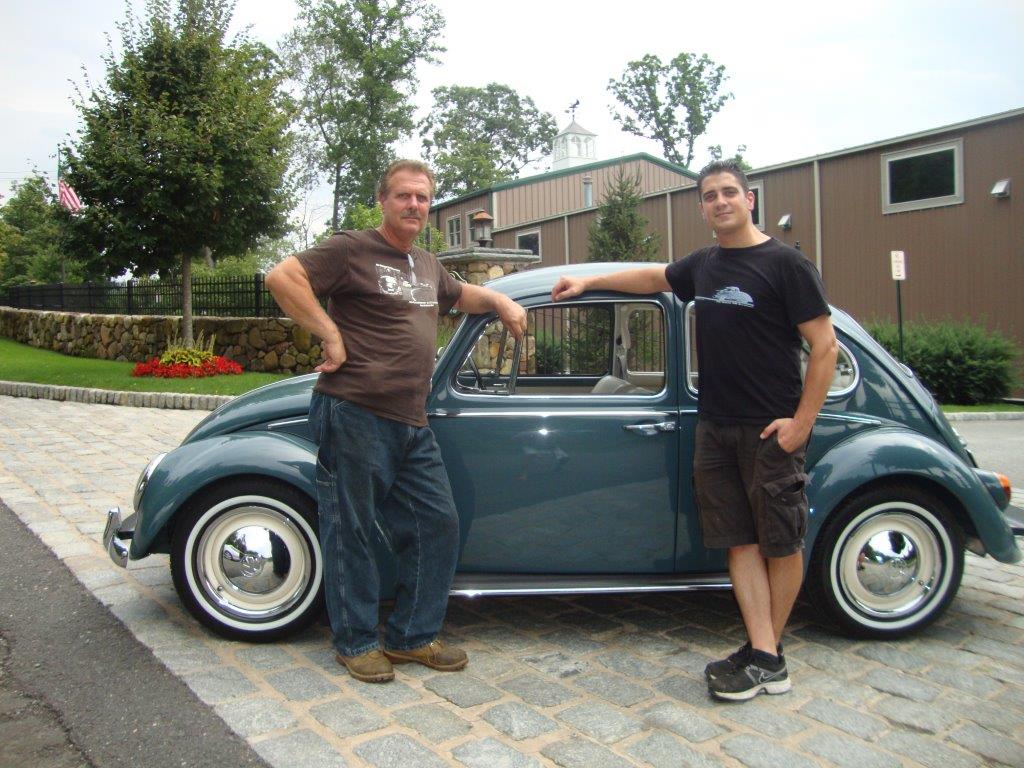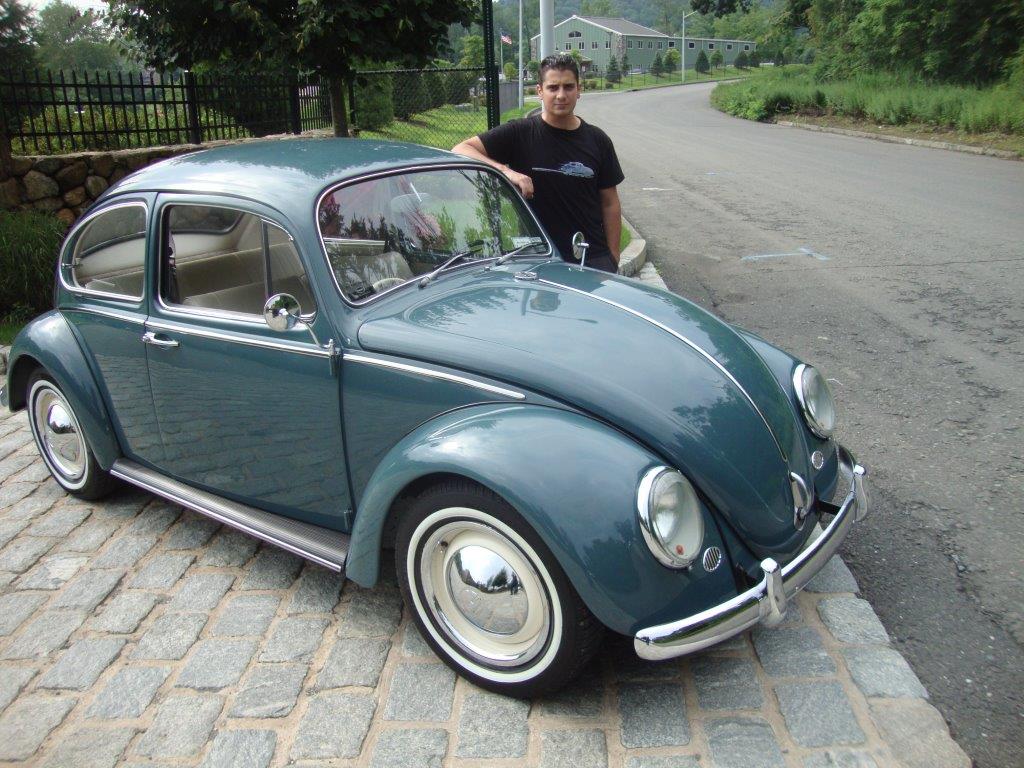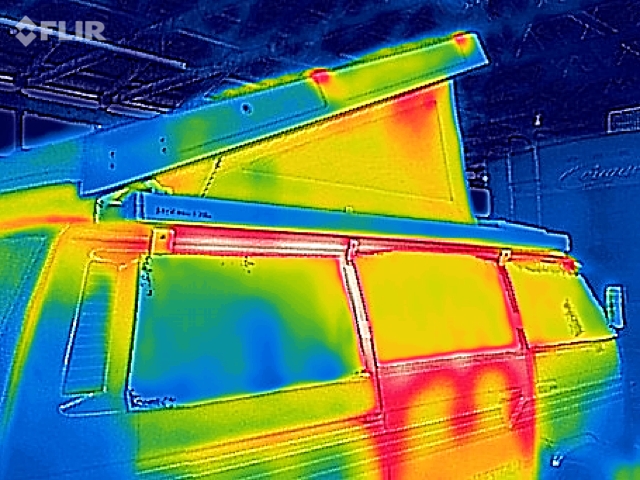
I’ve been experimenting (non scientifically) with insulation this winter in my 1983.5 Vanagon Westfalia. It gets quite cold here in Michigan this time of year, so I need to keep warm and be as energy efficient as possible. I heat the van using a Little Buddy propane heater, and an electric space heater. During the day I leave the heat off in the van, and when I return in the evening I turn both heaters on to bring the van up to temperature. Once the temperature is at a comfortable level, I switch over to just the electric space heater. The Little Buddy space heater really helps heat things up quickly, but I’m not crazy about the slight smell it gives off.
The following post illustrates just how much heat loss is occuring through the roof of our pop-tops, and one way to alleviate the heat loss using Reflectix.
The following pictures were taken on the evening of December 22nd.
The temperature inside the unheated barn where the van is, as measured from the inside of the insulated barn door, was 27.5 degrees Fahrenheit:
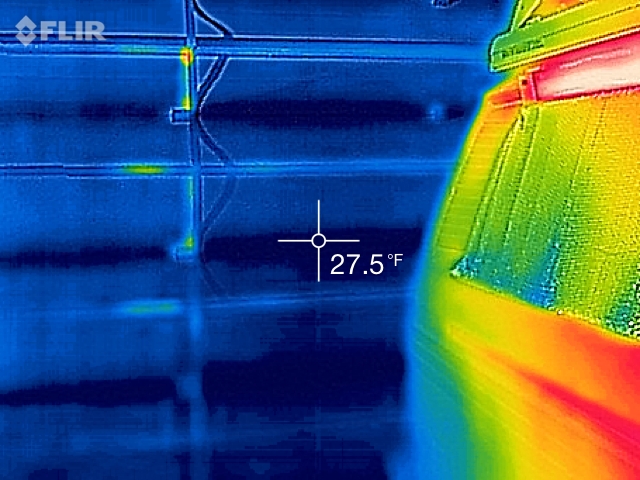
The temperature of the floor was 28 degrees Fahrenheit:
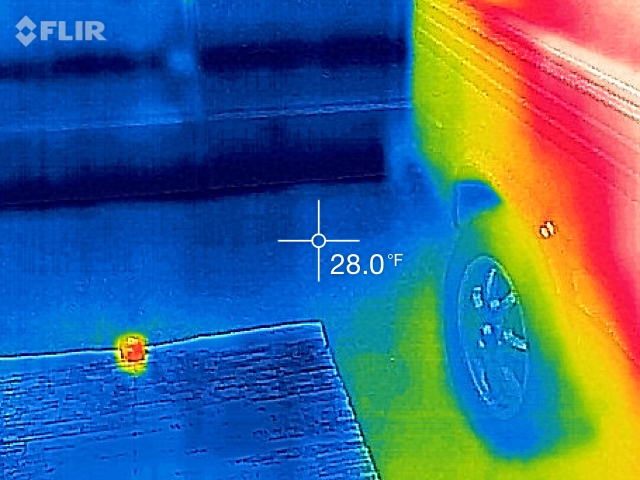
The temperature inside the van was about 70 degrees Fahrenheit:

The following picture of the roof was taken before I added the Relectix to the ceiling. You can see that the temperature of the roof is 38.4 degrees Fahrenheit, and quite a bit warmer than the ambient temperature inside the barn. Between 10-11 degrees warmer. In other words, I’m loosing a ton of heat through the roof itself.
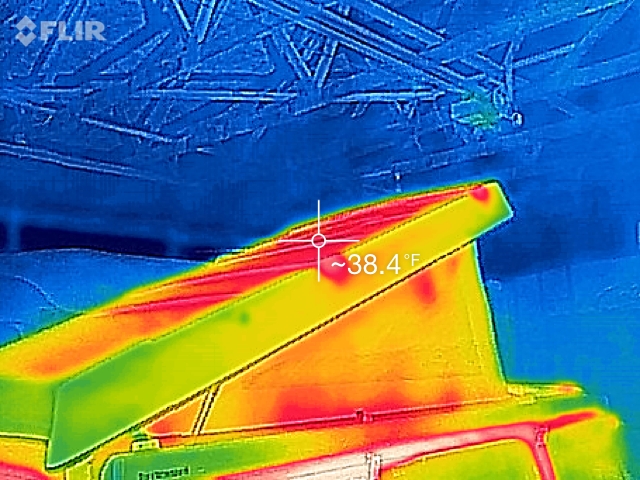
After seeing this, I went to my local hardware store and purchased a roll of reflectix. It was pretty much the perfect width for the ceiling of the pop-top. I cut a piece off the roll and loosely placed it on the ceiling of the pop-top and then went to bed. The Reflectix was precariously held in place by some other Reflectix I already had along the tent walls. I actually have two layers of insulation along the tent walls. First, I have Fanchers.com’s thermal insulation product snapped into place. I have that sandwiched between the tent wall and the Reflectix you see in the picture below. The Fancher’s product does a great job by itself, but I already had the Reflectix from the previous owner of the van, so I use it as well. Every bit helps!! Here’s a picture of the Reflectix installed on the ceiling (it’s not pretty, I know):
Looking at the picture above reminds me of the lawyer character, Chuck McGill, in the TV show “Better Call Saul”. The one that is has the electromagnetic sensitivity condition (psychological) and tries to shield himself from it all. Oh no… LOL!
For reference, here’s a picture of the Fanchers.com thermals installed by itself (much nicer looking and cozy):
The following pictures were taken the following morning, December 23rd. The Reflectix ceiling panel had been in place all night. As you can see, the temperature of the van’s roof is much lower and closer to the ambient temperature in the barn. Less heat loss! Sweet!
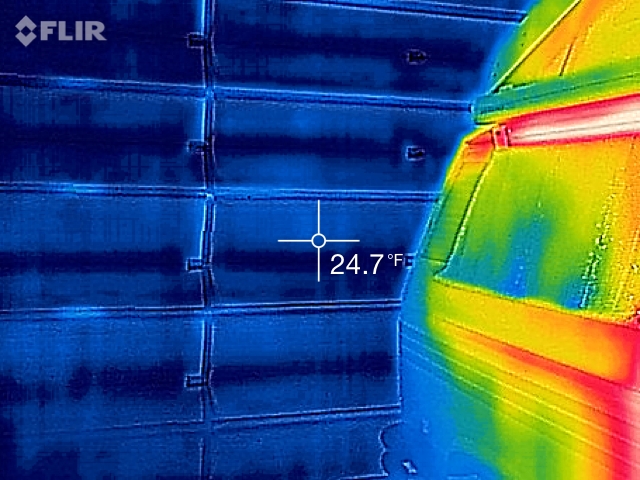
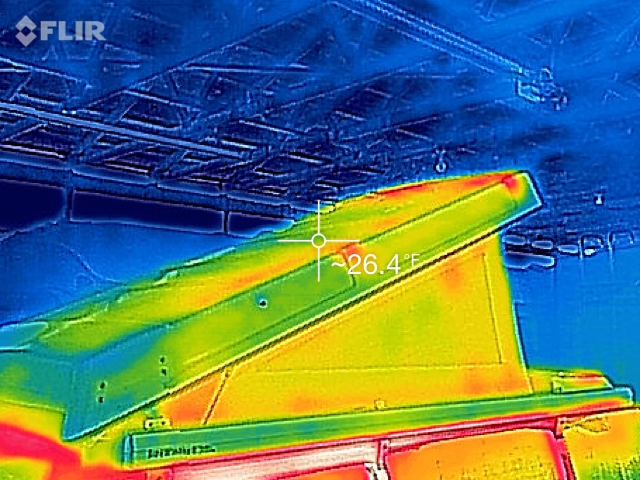
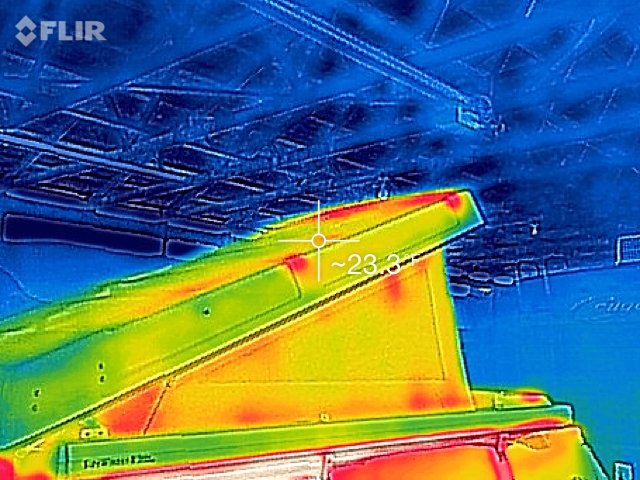
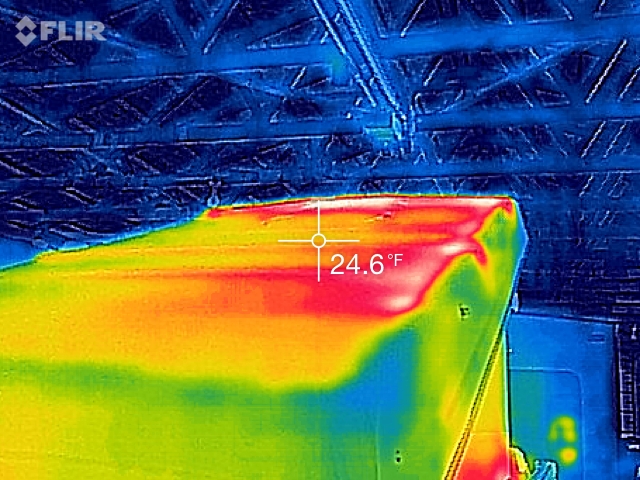
In the following picture, you can see how the temperature along the passenger side of the pop-top is quite red, and the temperature is warmer than my readings above. Like I mentioned earlier, the ceiling panel was loosely placed along the ceiling. It must have shifted overnight, leaving a gap for some warm air to escape.
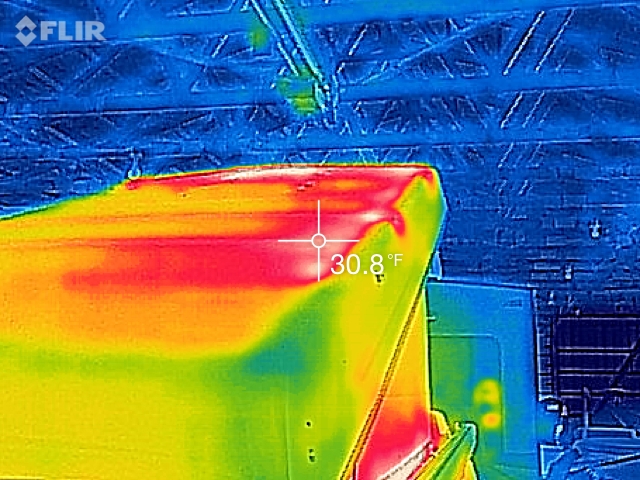
If you’ve read this far, thank you! I appreciate it! =) Hopefully this has helped you in some small way when it comes to your insulating questions. I feel the Reflectix ceiling panel is quite effective at keeping the heat in. It’s now less drafty, and the heater seems to kick on much less than it used to.
Come back soon for several more installments on this topic. I’ll be doing a post showing the effectiveness of insulation on the tent walls, and also the windows themselves.
POST EDIT (01/01/2017): Part 2 is now up! See it HERE!
